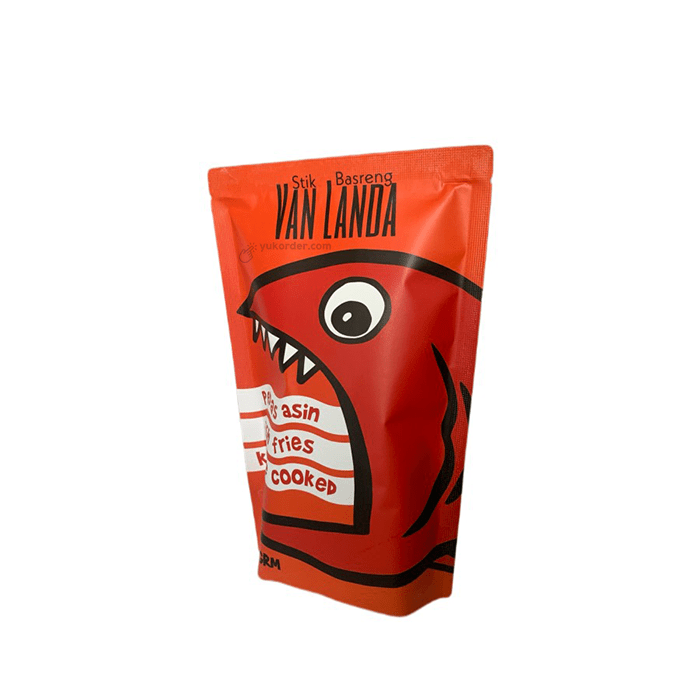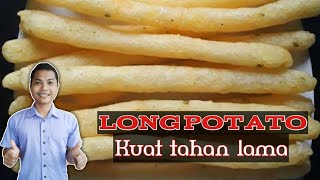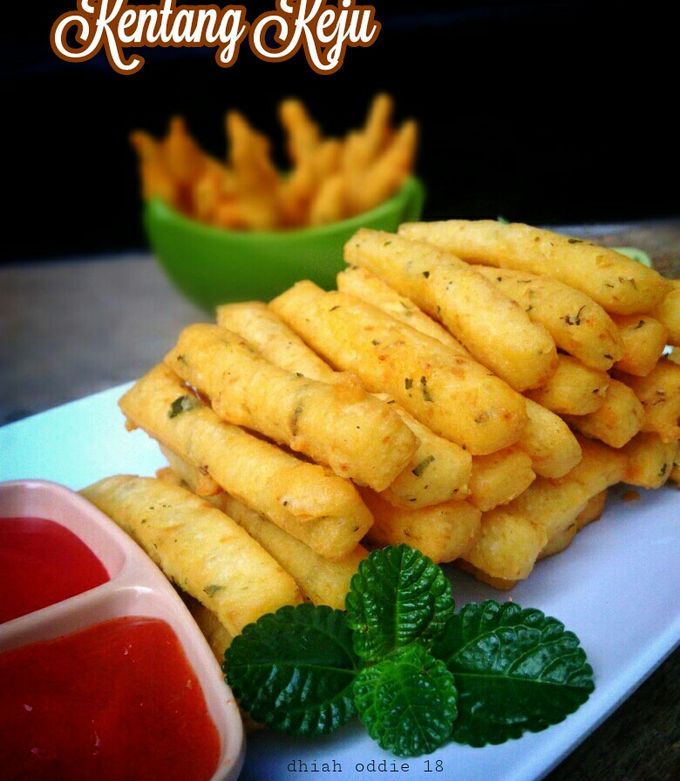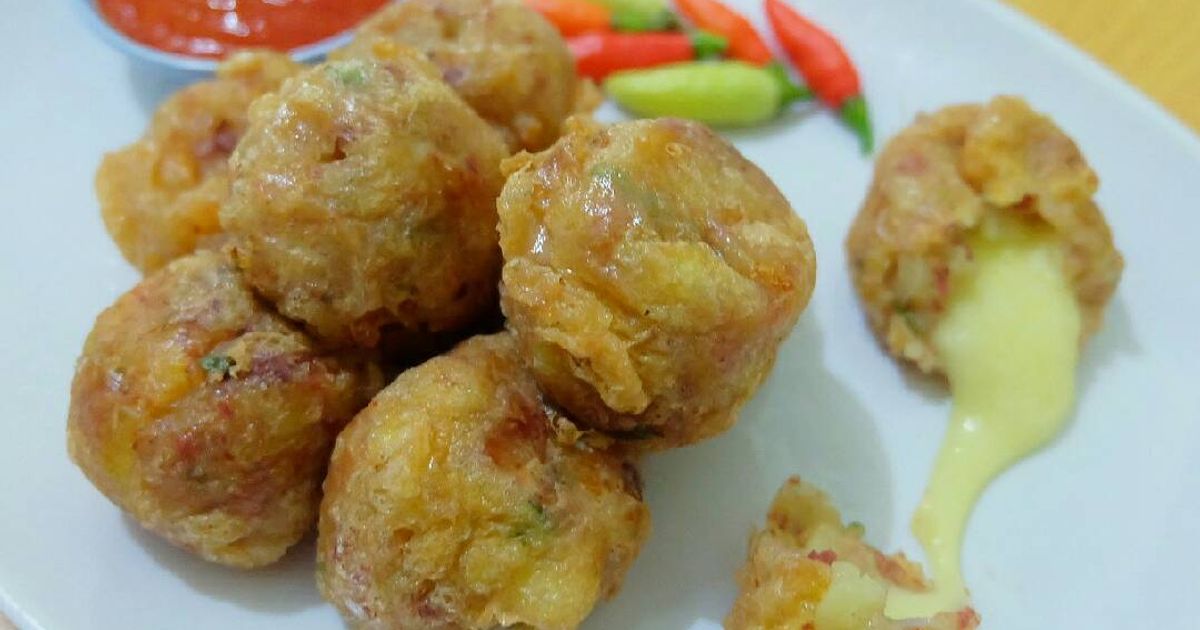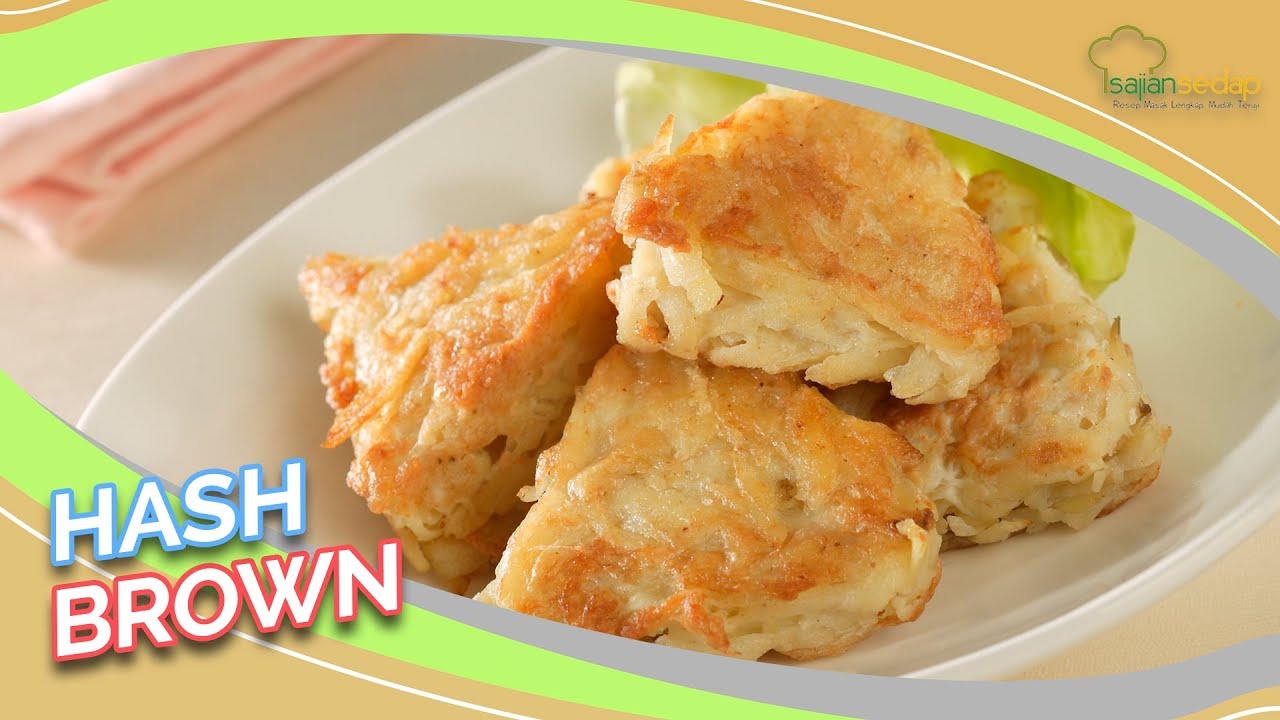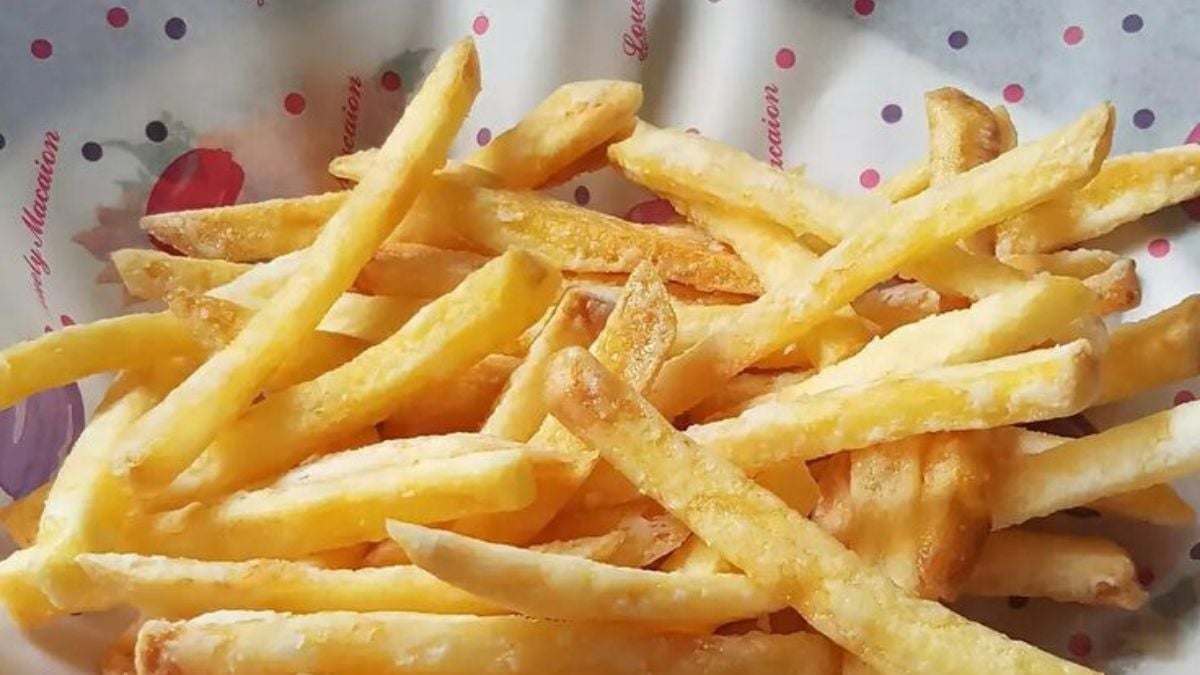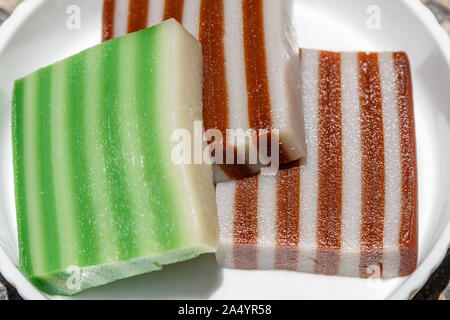
Kue Rogel is a beloved traditional Indonesian dessert that captures the rich culinary heritage of the archipelago. Known for its vibrant colors, intricate layers, and delightful sweetness, Kue Rogel is often enjoyed during special occasions, festivals, and family gatherings. Its unique combination of textures and flavors makes it a standout among Indonesia’s diverse array of traditional sweets. As a cultural emblem, Kue Rogel embodies the artistry and culinary ingenuity passed down through generations, offering a taste of Indonesia’s vibrant heritage.
Introduction to Kue Rogel: An Indonesian Traditional Dessert
Kue Rogel is a colorful, layered cake that showcases Indonesia’s culinary creativity. Typically made from rice flour and coconut, it features thin, brightly colored layers stacked into a compact, cube-shaped confection. The dessert’s appealing appearance, with its multi-colored layers and glossy finish, makes it a popular centerpiece at celebrations. Its sweet, aromatic flavor is complemented by a chewy texture that appeals to a wide range of palates. Over time, Kue Rogel has become an iconic symbol of Indonesian festive treats, enjoyed by both young and old alike.
This dessert is often associated with joyous occasions such as weddings, religious festivals, and national celebrations. Its preparation involves a blend of traditional techniques and vibrant ingredient choices, reflecting Indonesia’s diverse cultural influences. Kue Rogel is also appreciated for its relatively simple ingredients, which are accessible in local markets across the country. Despite its seemingly elaborate appearance, it is a dessert that can be made at home with patience and care, fostering a sense of community and shared culinary heritage.
The charm of Kue Rogel lies not only in its taste but also in its visual appeal. The layered construction and bright colors symbolize prosperity and happiness, making it a meaningful addition to celebratory tables. Its popularity extends beyond Indonesia’s borders, often featured in Indonesian restaurants and cultural festivals worldwide. As a traditional dessert, Kue Rogel continues to enchant new generations, preserving Indonesia’s rich culinary traditions while adapting to modern tastes.
In essence, Kue Rogel stands as a testament to Indonesia’s rich gastronomic diversity. Its combination of colorful aesthetics and delicious flavors makes it a memorable culinary experience. Whether enjoyed during festive seasons or as a special treat, Kue Rogel remains a cherished part of Indonesia’s culinary landscape, embodying the warmth, creativity, and cultural pride of the nation.
The Origins and Cultural Significance of Kue Rogel
The origins of Kue Rogel are rooted in Indonesia’s long-standing tradition of creating colorful, layered desserts that symbolize prosperity and happiness. While its exact historical beginnings are difficult to trace, it is believed to have been influenced by various regional culinary practices, including Chinese, Indian, and local Indonesian traditions. The use of rice flour and coconut reflects indigenous ingredients, while the vibrant colors and intricate layering showcase the artistic craftsmanship passed down through generations.
Culturally, Kue Rogel holds a special place in Indonesian celebrations, especially during major festivals such as Eid al-Fitr, Independence Day, and traditional wedding ceremonies. The dessert’s bright colors and festive presentation are thought to bring good luck, prosperity, and joy to those who partake in it. Its role extends beyond mere sustenance; it is a symbol of unity, shared heritage, and communal celebration. Preparing and sharing Kue Rogel often involves family and community participation, reinforcing social bonds.
In many regions of Indonesia, Kue Rogel is associated with specific rituals and customs. For instance, during certain festivals, it is customary to present beautifully crafted Kue Rogel as offerings or gifts to guests and elders. Its decorative appearance is sometimes enhanced with intricate icing or edible gold, emphasizing its significance as a luxury or ceremonial treat. The dessert’s colorful layers are also seen as representations of diversity and harmony within Indonesia’s multicultural society.
The cultural importance of Kue Rogel extends to its role in storytelling and oral traditions. Recipes and techniques are often passed down from elders to younger generations, preserving culinary heritage. Its preparation is sometimes accompanied by traditional music or dances, transforming the act of making the dessert into a cultural event. This deep-rooted significance underscores the dessert’s value as more than just a sweet dish—it is a symbol of Indonesia’s rich cultural identity.
Today, Kue Rogel continues to symbolize celebration and cultural pride across Indonesia. Its presence at festivals, family gatherings, and community events highlights its enduring relevance. As Indonesia modernizes, the traditional methods of making Kue Rogel are being preserved while also inspiring contemporary adaptations. The dessert remains a vibrant expression of Indonesia’s artistic and culinary traditions, connecting past and present through flavor, color, and shared cultural values.
Key Ingredients Used in Making Kue Rogel
The primary ingredients for Kue Rogel are simple yet carefully selected to achieve its distinctive appearance and texture. Rice flour forms the base of the cake, providing a chewy and slightly sticky consistency that is characteristic of many traditional Indonesian sweets. Coconut milk is used to enrich the dough, adding a fragrant, tropical aroma and enhancing the overall flavor. These ingredients are readily available in local markets across Indonesia, making the dessert accessible to home cooks and professional bakers alike.
Colorful food dyes are a hallmark of Kue Rogel, used to create its vibrant, multi-layered appearance. Typically, natural or artificial food coloring is added to portions of the dough to produce a range of bright hues such as red, green, yellow, purple, and blue. These colors are carefully layered during assembly to produce the striking visual effect that makes Kue Rogel so appealing. The use of natural colorants, such as pandan extract for green or beetroot for red, is also common, emphasizing traditional and health-conscious choices.
Sweetness in Kue Rogel primarily comes from palm sugar or gula melaka, which lends a rich, caramel-like flavor that complements the coconut and rice flour. Some recipes incorporate a touch of vanilla or pandan flavoring to enhance the aroma. In addition to these, shredded coconut is often used as a filling or topping to add texture and a coconutty aroma. Edible gold leaf or decorative icing may be added to elevate the presentation for special occasions, further highlighting its festive significance.
Eggs are sometimes included in the dough to improve its elasticity and structure, especially when preparing larger or more intricate layers. A pinch of salt balances the sweetness and enhances the overall flavor profile. The combination of these key ingredients—rice flour, coconut milk, colorful dyes, sweeteners, and optional flavorings—creates a harmonious blend that results in Kue Rogel’s signature chewy, sweet, and visually captivating dessert.
The quality of ingredients significantly influences the final outcome of Kue Rogel. Fresh, high-quality coconut milk and natural food colorings produce a more authentic and vibrant result. Careful selection and precise measurements are essential for achieving the perfect balance of flavors and textures, ensuring that each piece of Kue Rogel is both aesthetically pleasing and delicious. This emphasis on ingredient quality underscores the craftsmanship involved in creating this traditional Indonesian delicacy.
Step-by-Step Process of Preparing Kue Rogel
Making Kue Rogel involves a meticulous process that combines traditional techniques with artistic flair. The first step is preparing the colored dough. Rice flour is mixed with coconut milk, sugar, and a pinch of salt to form a smooth, pliable dough. The dough is then divided into portions and mixed with different food colorings to create the various vibrant layers. Each colored dough is kneaded until uniform and set aside for shaping.
Next, the colored dough is rolled out into thin sheets using a rolling pin or a pasta machine if available. The goal is to achieve a very thin, even layer to ensure that the final dessert has a delicate, layered appearance. Once the sheets are prepared, they are carefully cut into rectangular or square shapes, which will be stacked to form the characteristic layers of Kue Rogel. Precision and patience are essential during this step to maintain uniform thickness and size.
The assembly process begins by layering the colored sheets on top of each other, alternating colors to create a visually appealing pattern. The stacked layers are then pressed gently to ensure they adhere well and form a compact cube. Some recipes call for steaming the layered stack briefly to help the layers meld together, while others prefer to bake or simply chill the assembled layers until firm. The dessert is then cut into small, bite-sized cubes or slices for serving.
Additional decoration can be added at this stage, such as drizzling with sweet syrup, garnishing with shredded coconut, or applying decorative icing or gold leaf. For the final touch, the Kue Rogel is usually chilled to set the layers firmly and enhance the flavor. The result is a colorful, multi-layered cake with a chewy texture and a sweet, aromatic taste that embodies Indonesia’s festive spirit. Each step requires patience, precision, and an eye for detail to produce a truly stunning and delicious dessert.
Cleaning and maintaining a clean workspace, using high-quality ingredients, and practicing gentle handling of the delicate layers are vital for success. The process, although time-consuming, offers a rewarding experience as it culminates in a visually striking and tasty treat. Mastery of these steps allows home cooks and chefs to create authentic Kue Rogel that honors Indonesia’s culinary traditions and delights guests.
Variations and Regional Differences of Kue Rogel
While the core concept of layered, colorful rice flour cake remains consistent, various regions in Indonesia have developed their own unique twists on Kue Rogel. These regional variations often reflect local ingredients, cultural influences, and aesthetic preferences. For example, in Java, Kue Rogel may incorporate pandan flavoring and natural green coloring, emphasizing the use of local tropical herbs. The layers might also be slightly thicker, with a softer texture preferred.
In Bali and other eastern regions, Kue Rogel might feature additional ingredients such as jackfruit or banana to add flavor complexity. Some versions incorporate a layer of sweetened mung bean paste or coconut custard between the rice flour layers, creating a richer filling and varied textures. The use of traditional Balinese decorative motifs, such as intricate icing or edible gold, further highlights regional artistry and cultural identity.
